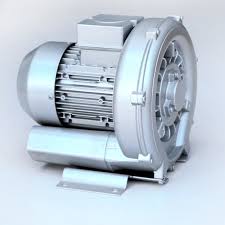Regenerative Blowers
Regenerative blowers, also known as ring compressors, are a type of blower that uses an impeller with blades to accelerate air or gas, creating pressure or vacuum for various industrial applications. They are characterized by their ability to handle large volumes of airflow at relatively lower pressures and vacuums compared to positive displacement blowers, resulting in quieter operation and reduced vibration.
How they work:
-
Air Intake:Air enters the blower through the inlet port and is drawn into the impeller’s chamber.
-
Impeller Rotation:The impeller, with its multiple blades, rotates at high speed, accelerating the air outward and forward.
-
Compression and Discharge:The accelerated air is pushed against the blower housing, creating pressure and vacuum, before being discharged through the outlet.
-
Dual-Stage:Some regenerative blowers have a dual-stage design, where air is channeled around the impeller twice, increasing pressure or vacuum.
Key features and benefits:
-
Quiet Operation:The lower pressure and vibration compared to other blower types make them quieter.
-
Reduced Maintenance:They often have fewer moving parts, leading to lower maintenance requirements.
-
Versatility:Regenerative blowers are used in a variety of applications, including wastewater treatment, pneumatic conveying, and aeration.
-
Efficiency:They can be more efficient than some alternatives in certain applications.
Applications:
- Wastewater Treatment: Providing aeration for biological processes.
- Pneumatic Conveying: Moving materials through pipes.
- Aeration: Supplying oxygen to ponds, fish farms, and other aquatic environments.
- Vacuum Lifting: Creating suction for material handling.
- Other Industrial Processes: Various applications requiring medium pressure and vacuum.
